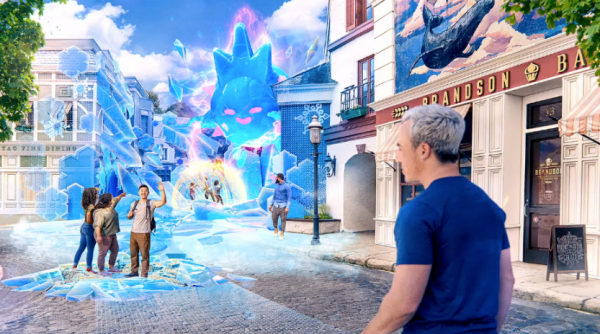Niantic Unveils Campfire, A Social App for Mobile AR Gamers
Following Niantic’s launch of Pokemon Go in 2016, meetups in the games, in-game raids, and the battles have been coordinated on platforms like Discord and Reddit. This week, Niantic unveiled Campfire, its social app that is built to connect mobile Augmented Reality (AR) players.
In Niantic’s games, players are incentivized to head out to the outdoors and meet others. The company refers to its augmented reality development as a “real-world metaverse.”

With Campfire, Niantic plans to make this process a lot easier. Campfire will also serve as an alternative to Pokemon Go’s Discord servers which have been running for the past few years.
Campfire will also serve as the “homepage” for this segment of the techno-reality.
Like Snapchat’s map-based social platform, Campfire also allows players to connect with others, discover nearby events, message people, and join communities. It will also enable users to share their location details with their friends although precaution should be taken not to share this with total strangers.
Niantic CEO John Hanke says Campfire is providing a platform for conducting activities for their disparate Niantic gaming communities that have already been formed across the world. According to Hanke, Campfire is providing the tools that will make these connections and activities easier and smoother for users
Campfire, along with Niantic’s Lightship Visual Positioning System (VPS) are part of the company’s latest play as it seeks to create the “real-world metaverse”.
Over the past few years, Niantic has been inviting its Ingress and Pokemon Go users to scan local landmarks in the areas they are playing. The company has even been providing in-game incentives for this crowdsourced data.
Developers validate the short video snippets of the real-world locations. These are subsequently processed to form a part of the augmented reality map of the world. During the launch, Niantic revealed that the most densely mapped cities by its visual positioning system are Seattle, Los Angeles, London, New York, and Tokyo.
More than 100 cities across the globe will be covered by its VPS by the end of 2022. Thanks to Niantic’s recent purchase of 8th Wall, these mapping features are also coming to mobile web browsers.
The Lightship visual positioning system (VPS) works almost like GPS such that when a user scans a location, the VPS determines their location. In fact, the name VPS is a nod to the more familiar GPS.
We are more well-versed with the GPS which shows the current location along with what’s around you. The VPS, on the other hand, adds an extra layer of information and will show you the user-generated experiences in that location and has been developed to enhance your real-world experience.
Lightship’s visual positioning functionality will also be accessible to augmented reality developers through Niantic’s Lightship AR Developer Kit.
https://virtualrealitytimes.com/2022/05/27/niantic-unveils-campfire-a-social-app-for-mobile-ar-gamers/https://virtualrealitytimes.com/wp-content/uploads/2022/05/Niantic-600x334.pnghttps://virtualrealitytimes.com/wp-content/uploads/2022/05/Niantic-150x90.pngAugmented RealityTechnologyFollowing Niantic’s launch of Pokemon Go in 2016, meetups in the games, in-game raids, and the battles have been coordinated on platforms like Discord and Reddit. This week, Niantic unveiled Campfire, its social app that is built to connect mobile Augmented Reality (AR) players. In Niantic’s games, players are incentivized...Kristin HummelKristin Hummel[email protected]AuthorVirtual Reality Times - Metaverse & VR
